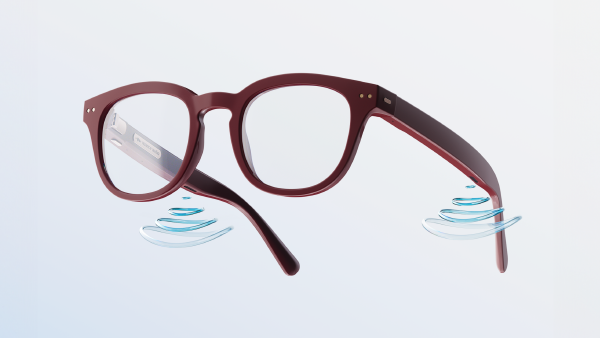You are viewing 1 of your 3 articles before login/registration is required
Eye on the Horizon: Smart Contact Lenses
For this latest installment of Eye on the Horizon, we investigate advances being made in the Smart Contact Lens space
Last year, we covered the development of a new biofuel-charged miniature battery (1) that could (at least in theory) be used to charge a wearer’s smart contact lenses (SCLs) using their own tears.
Running parallel to advances being made into how this type of wearable technology might be charged, the evolution of SCLs and their potential uses are being accelerated by a number of major players in the industry, including quite a few names not usually linked to ophthalmology: Google, Samsung, Sony, etc. These household names are currently experimenting with everything from augmented reality (AR) and virtual reality (VR) add-ons, to how the next generation of SCLs might be able to record visual data.
There are also a number of more immediately recognizable companies in the ophthalmic space – Alcon, RaayonNova, Sensimed, Medella Health, and Innovega – who are investing in research and development in the SCL arena. Unsurprisingly, these companies are less interested in the media and entertainment prospects of SCLs, and focused more specifically on the healthcare potentials of the technology. Monitoring of intraocular (IOL) pressure and glucose levels, automated drug elution, diabetic retinopathy (DR) treatments, and eye tracking using electrooculography (in order to aid vision therapy) have all been proposed as research candidates for future SCL inclusion.
While Alcon’s initial foray into the SCL world – a collaboration with Google and its Verily Life Sciences division on a glucose-monitoring lens project – was put on indefinite hold in 2018, the Swiss-American medical device company remains involved in projects investigating how smart intraocular lenses might be used in cataract surgery and vision correction. RaayonNova successfully submitted a patent for their SCL featuring an AR/VR smart lens with peripheral and focused vision in May 2022.
Meanwhile, another Swiss medical technology company, Sensimed, has concentrated its focus on glaucoma management. Its flagship product, the Sensimed Triggerfish, a silicone-based soft contact lens, can be used to monitor IOL fluctuations in glaucoma patients over a 24-hour period. Approved by the FDA back in March 2016, the device provides insights into ocular volume changes throughout the day and night, helping guide glaucoma treatments for the physician.
Providing an alternative to the finger-prick tests associated with glucose monitoring, Medella Health is continuing work on SCLs that include embedded biosensors that can monitor glucose levels in tear fluid. According to Medella Health, the lenses will be able to transmit near-real-time data to an external mobile device.
In terms of drug delivery potential for SLCs, in 2022 the FDA passed phase III trials for Johnson & Johnson Vision Care’s Acuvue Theravision, a daily disposable etafilcon contact lens infused with ketotifen. The product was made available in Canada, but Johnson & Johnson have ultimately decided to discontinue the lens from December 28, 2024. Meanwhile, Innovega’s iOptik system combines SLCs with a pair of specialized glasses to create a wide field of view for AR/VR experiences. The soft disposable lenses – when paired with the specialized glasses – allow wearers to experience digital content projected “directly on the retina.”
There are a number of barriers routinely cited in bringing SLCs to market: biocompatibility, regulatory approval, and cost-effectiveness. Notably, Mojo Vision’s research into an immersive AR prototype contact lens (the Mojo Lens) was canceled at the beginning of 2023 due to lack of funding, with CEO Drew Parkins citing "extremely tight capital markets" and a "slumping global economy" as reasons for the discontinuation (2).
The research into SLCs continues to evolve, bringing more capabilities and potential to this form of wearable technology. And while several SLCs are already commercially available, such as the Sensimed Triggerfish (currently in use in some UK hospitals as part of their research studies), it remains to be seen how widespread the adoption will be of such technology. It’s also not yet evident whether any of the additions to existing SLC technology – as novel and exciting as they may sound in print – will endure through the initial novelty phase, presenting them as long-term, viable alternatives to smart glasses in the healthcare and entertainment sectors.
The New Optometrist Newsletter
Permission Statement
By opting-in, you agree to receive email communications from The New Optometrist. You will stay up-to-date with optometry content, news, events and sponsors information.
You can view our privacy policy here
Most Popular
Sign up to The New Optometrist Updates
Permission Statement
By opting-in, you agree to receive email communications from The New Optometrist. You will stay up-to-date with optometry content, news, events and sponsors information.
You can view our privacy policy here
Sign up to The New Optometrist Updates
Permission Statement
By opting-in, you agree to receive email communications from The New Optometrist. You will stay up-to-date with optometry content, news, events and sponsors information.
You can view our privacy policy here







